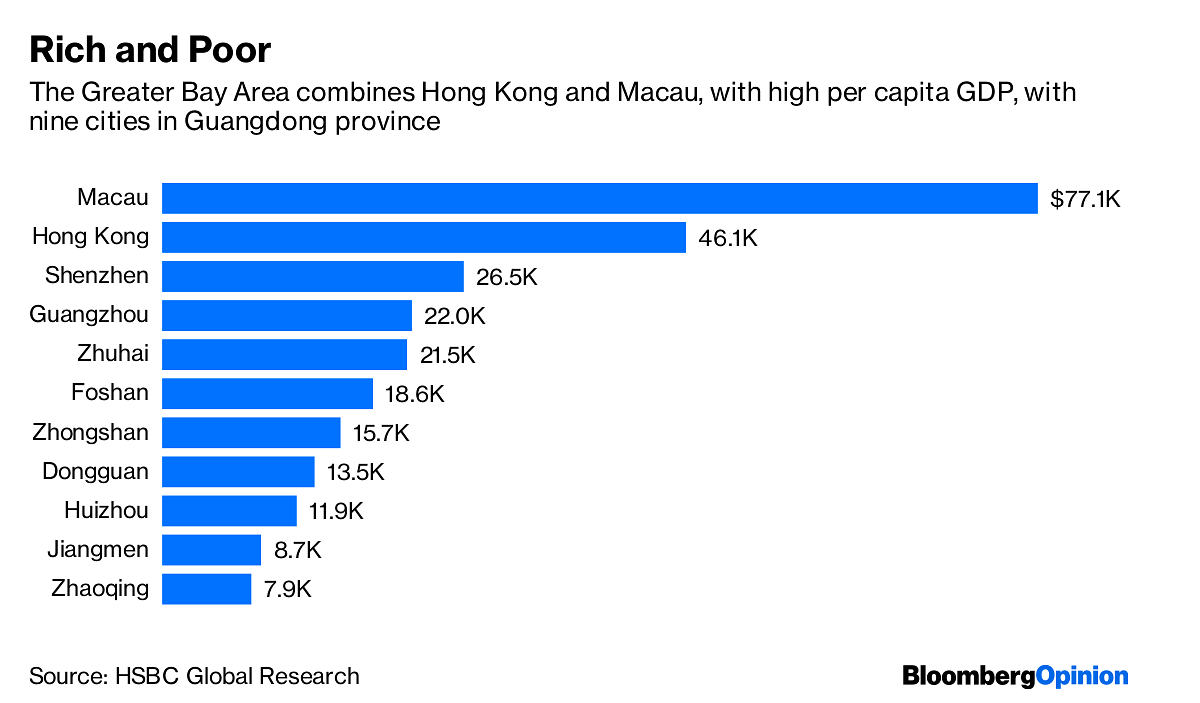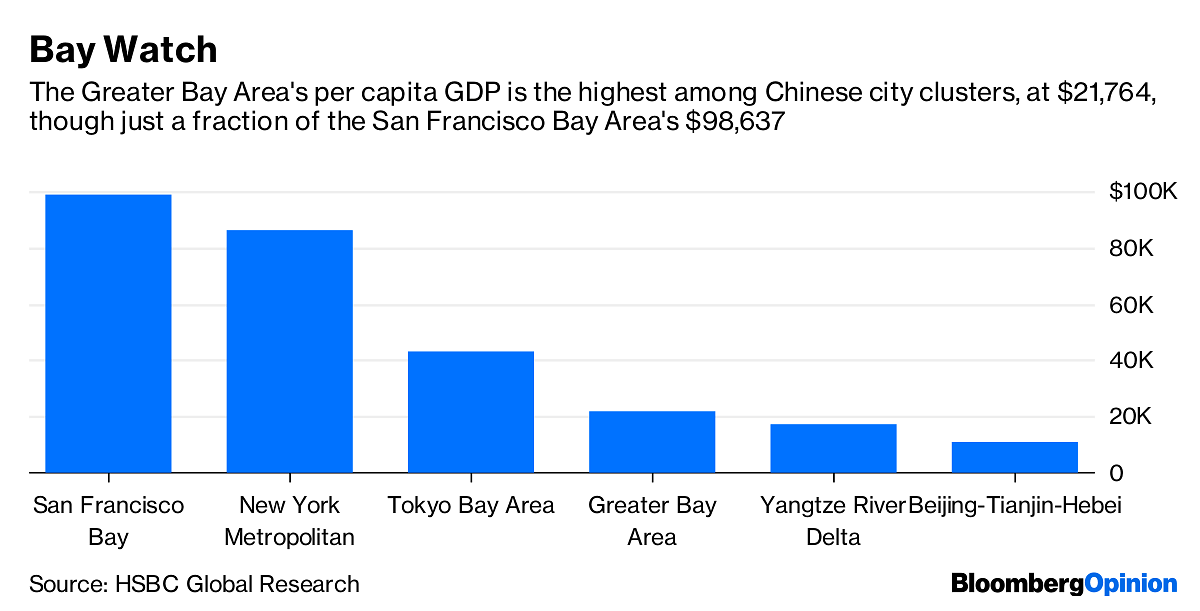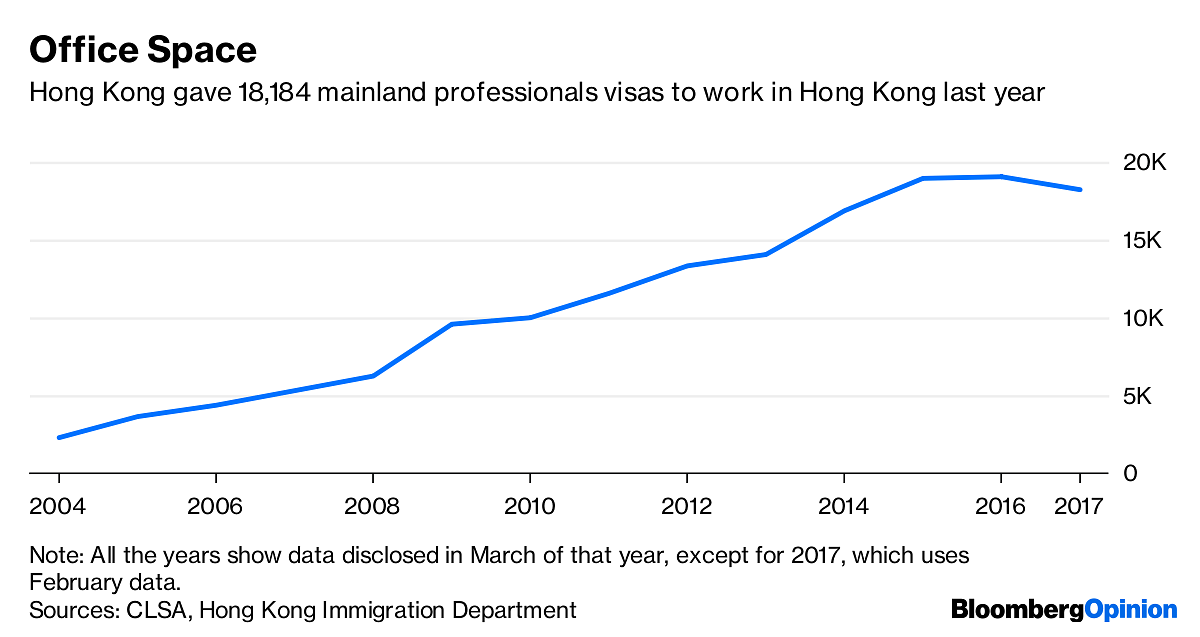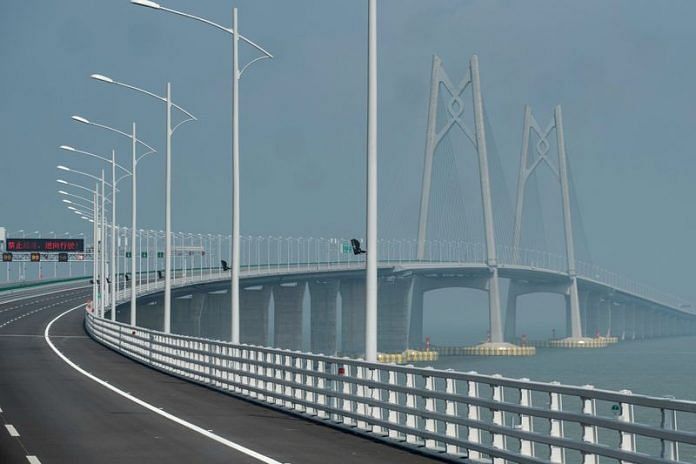While China has moved to make it easier for people from Hong Kong and Macau to live and work in the mainland, challenges remain.
Build it and they will come. Maybe.
President Xi Jinping’s grand plan to bind Hong Kong and Macau with the southern tip of China using the world’s longest bridge and a cross-border bullet train faces some large roadblocks.
The “Greater Bay Area” is an attempt to create an economic cluster rivaling those in San Francisco and Tokyo, by deepening links between China’s former European colonies and nine cities in neighboring Guangdong province.
The project has plenty going for it from an economic standpoint. Hong Kong offers capital-markets expertise, the technology hub of Shenzhen is bursting with cash-hungry startups, and Macau’s is the world’s biggest gambling center. While Hong Kong boasts the world’s most unaffordable real estate, mainland cities have cheaper labor and property prices. Mix all that together and you have a recipe for booming growth.
Also read: Will China bail out a broke Pak or is IMF the last resort?
Combined, the region accounts for just 5 percent of China’s 1.4 billion people but generates more than 12 percent of its GDP, CLSA Ltd. notes.
Rich and Poor

But the hurdles are also considerable. Under the “one country, two systems” formula that saw Hong Kong and Macau return to Chinese sovereignty in the 1990s, the cities maintain vastly different political and economic structures.
These include having their own, freely convertible currencies, separate passport and customs controls, and legal systems. It will take more than a 55-kilometer (34-mile) bridge or a high-speed train, which starts operating from Hong Kong this month, to close that divide.
Bay Watch

China’s capital account is still partially closed, with full liberalization of the yuan perhaps decades away. While there’s a shared Chinese culture, the differences between Hong Kong and Macau — with their capitalist history — and the cities of communist China are deeper than those between members of the European Union.
Beyond controls on capital, cross-border movements of people are also restricted. Seamless travel and residency rights are arguably a prerequisite for the Greater Bay Area to meld into a unified economic entity akin to Silicon Valley — yet relaxing such limits is a sensitive issue, as the Brexit vote in the U.K. has shown.
Also read: The big 2+2 talks takeaway: China has brought India and US much closer
While China has moved to make it easier for people from Hong Kong and Macau to live and work in the mainland, challenges remain. Personal income-tax rates are as high as 45 percent for those in the upper bracket of 85,000 yuan per month ($12,400), versus a maximum of 17 percent in Hong Kong. That reduces the attractions of moving to escape Hong Kong’s sky-high property prices.
Meanwhile, the steady flow of mainland citizens into Hong Kong has stirred resentment among the local population. There were 82,531 Hong Kong residents working in China in 2016. In the other direction, close to 950,000 mainland migrants have moved to Hong Kong under a program that allows as many as 150 people a day to join their families in the former British colony, the South China Morning Post reported last month.
Office Space

Some of these logistical headaches are likely to be ironed out over time, such as the need for multiple government permits to drive across the Hong Kong-Zhuhai-Macau bridge. Others will persist.
These include issues such as health care and food safety, not to mention giving up Hong Kong’s more robust political freedoms. Hong Kong residents moving across the border lose access to the city’s high-quality public hospitals, while a vaccine scandal this summer was a reminder of weaknesses in the Chinese system.
Far from moving to the mainland, many Hong Kong residents are deserting the city for other parts of the world. Emigration reached a three-year high last year, with destinations including even Iceland. Meanwhile, international companies value Hong Kong’s rule of law and intellectual property protections. Firms seeking to transfer staff frequently say that it’s easier to persuade people to move to Hong Kong or Macau than mainland China.
At some point, integration will happen. After all, Hong Kong’s one country, two systems agreement is scheduled to expire in 2047. If the city’s autonomy suffers further erosion, that process may happen more quickly. Until then, the Greater Bay Area will remain more of an idea than a reality. – Bloomberg



